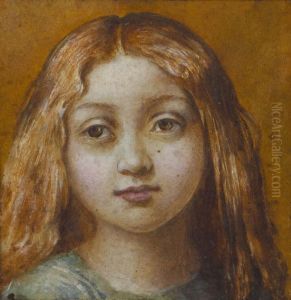Lady Blanche Lindsay Paintings
Lady Blanche Lindsay, born Lady Blanche FitzRoy in 1844, was a notable figure in the Victorian art world, not just for her aristocratic background but also for her contributions to the arts. As the daughter of Henry FitzRoy, 5th Duke of Grafton, and his wife, Mary Caroline Berkeley, she was born into a life of privilege that gave her access to the cultural and intellectual elite of her time. Despite the expectations placed upon women of her social standing, Lady Blanche carved out a space for herself as an artist and art collector, showcasing the depth of her passion and commitment to the arts.
Her marriage to Sir Coutts Lindsay in 1864 further propelled her into the art world. Sir Coutts was a painter and the co-founder of the Grosvenor Gallery in London, a space that became synonymous with the Aesthetic Movement. This gallery not only challenged the traditional Victorian values of art but also became a haven for artists who were considered avant-garde during the late 19th century. Lady Blanche's involvement in the gallery, alongside her husband, positioned her as a central figure in this burgeoning artistic movement. She was known for her discerning eye and her patronage of artists, which helped to elevate the status of the Grosvenor Gallery as a major cultural institution of its time.
Beyond her role as a patron and advocate for the arts, Lady Blanche Lindsay was also an artist in her own right. Though her work did not gain the same level of recognition as some of her contemporaries, her contributions to the Victorian art scene were nonetheless significant. Her artistic output, which included watercolors and sketches, was well-regarded among her peers for its sensitivity and skill. Moreover, her artistic talents extended to writing, where she contributed to the intellectual and cultural discourse of the period through essays and journals.
Lady Blanche Lindsay passed away in 1912, leaving behind a legacy that was deeply intertwined with the artistic movements of her time. Her life and work exemplify the role of women as both creators and patrons in the Victorian art world, challenging traditional narratives and contributing to a richer understanding of the period. While she may not be as widely remembered as some of her contemporaries, her impact on the art and culture of the 19th century remains undeniable.
